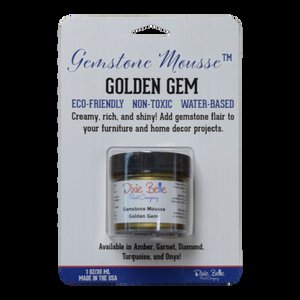Choosing Eco-Friendly Scratch & Spill Resistant Furniture For A Playroom
Today we discuss Eco-Friendly Scratch & Spill Resistant Furniture For A Playroom. In search of sustainable furniture that can endure the demands of a playroom? Your search ends here! We offer the ideal answer for you.
When selecting furniture that is eco-friendly and resilient to scratches and stains, certain important factors should be taken into account. This guide will walk you through the steps of choosing the perfect eco-friendly furniture for your playroom. If you’re interested in discovering how to pick furniture that is both durable and environmentally friendly, continue reading!
Eco-Friendly Scratch & Spill Resistant Furniture For A Playroom:
When setting up a playroom, it’s crucial to select furniture that is eco-friendly, sturdy, and able to withstand scratches and spills. Kids can be quite energetic and accidents are inevitable, so it’s important to invest in furniture that can endure rough use. This guide will assist you in picking out the ideal eco-friendly furniture for your playroom, creating a safe and sustainable environment for your children to play and grow.
1. Consider the Material:
The choice of material for playroom furniture is crucial. When it comes to eco-friendly options, look for the following:
- Bamboo: A sustainable and fast-growing material that is harder than most woods.
- Recycled Plastic: Furniture made from recycled plastic is durable, easy to clean, and resistant to both scratches and spills.
- Sustainably Sourced Wood: Look for furniture made from FSC-certified wood, as it ensures responsible forest management.
- Cork: A renewable and biodegradable material that is resistant to scratches and spills.
- Upcycled Furniture: Consider repurposing old furniture or buying second-hand pieces to reduce waste and give them a new lease on life.
2. Opt for Stain-Resistant Fabrics:
Children can be messy, so choosing furniture with stain-resistant fabrics is a wise decision. Look for:
- Microfiber: A durable and stain-resistant fabric that is easy to clean.
- Crypton: A high-performance fabric that repels spills and resists stains, odors, and bacteria.
- Sunbrella: Designed for outdoor use, Sunbrella fabrics are water-repellent, fade-resistant, and easy to clean.
3. Assess Durability:
To ensure your furniture stands up to the test of time and rowdy playdates, check for the following features:
- Quality Construction: Look for sturdy frames, reinforced corners, and strong joints.
- Heavy-Duty Hardware: Check that the furniture is equipped with durable hinges, knobs, and handles.
- Scratch-Resistant Coating: Some furniture comes with a protective coating that prevents scratches and dings.
- Impact-Resistant Materials: Consider furniture made from materials like high-density polyethylene or fiberglass, which are less prone to damage.
4. Choose Non-Toxic Finishes:
When selecting furniture, ensure that it is finished with non-toxic and eco-friendly coatings. Look for:
- Water-Based Paints: These contain fewer volatile organic compounds (VOCs) and are safer for children.
- Low-VOC or VOC-Free Finishes: These finishes emit fewer harmful chemicals into the air.
- Natural Oils and Waxes: Furniture treated with natural oils and waxes not only looks beautiful but is also safe for children.
5. Consider Easy Maintenance:
Cleaning and maintaining playroom furniture should be hassle-free. Keep the following in mind:
- Washable Cushion Covers: Opt for removable and machine-washable cushion covers for easy cleaning.
- Easy-to-Clean Surfaces: Look for furniture with smooth and non-porous surfaces that can be easily wiped clean.
- Stain-Resistant Coatings: Certain furniture pieces come with stain-resistant coatings that make spills and stains easier to remove.
6. Prioritize Safety:
Safety should always be a priority in a playroom. Consider the following safety features:
- Round Edges: Furniture with rounded edges reduces the risk of accidental injuries.
- Anti-Tip Features: Look for furniture with anti-tip features to prevent tipping hazards.
- Non-Toxic Materials: Ensure that the furniture is free from harmful chemicals such as lead and phthalates.
- Sturdy Construction: Make sure the furniture is stable and won’t easily topple over.
7. Check for Certifications:
To confirm the eco-friendliness and safety of the furniture, check for relevant certifications such as:
- Forest Stewardship Council (FSC) certification for sustainably sourced wood.
- Greenguard certification for low chemical emissions.
- Global Organic Textile Standard (GOTS) certification for organic fabrics.
8. Read Reviews and Ratings:
Before making a final decision, read reviews and ratings of the furniture you’re considering. Look for feedback on durability, scratch resistance, and spill resistance from other parents or customers who have purchased the same items.
9. Set a Budget:
While eco-friendly furniture tends to be more expensive, it’s essential to set a budget before making a purchase. Consider the long-term benefits of investing in durable and sustainable furniture that will withstand the test of time.
10. Explore Customizable Options:
Consider customizable furniture options that allow you to choose eco-friendly materials, fabrics, and finishes according to your preferences. This way, you can create a playroom that suits your style and meets your eco-conscious goals.
Faqs for Eco-Friendly Scratch & Spill Resistant Furniture For A Playroom:
Yes, some several finishes and coatings can enhance the scratch and spill resistance of eco-friendly furniture. Look for furniture with water-based or low-VOC (volatile organic compound) finishes, as these are generally more environmentally friendly. Additionally, consider furniture with a protective sealant or laminate layer that adds an extra barrier against scratches and spills.
To ensure the safety of eco-friendly furniture for your children, look for products that comply with recognized safety standards, such as those set by ASTM International or the Consumer Product Safety Commission (CPSC). Additionally, choose furniture made with non-toxic materials and avoid pieces that contain harmful substances like formaldehyde or lead.
Yes, some several certifications and labels can help you identify eco-friendly furniture. Look for products certified by organizations such as the Forest Stewardship Council (FSC), which ensures that wood comes from sustainably managed forests, or certifications like Greenguard or Cradle to Cradle, which verify the sustainability and safety of materials used in the furniture.
When assessing the durability of eco-friendly furniture, consider factors such as the material used, construction techniques, and user reviews. Materials like bamboo and reclaimed wood tend to be strong and resilient, while solid construction methods such as mortise and tenon joints can enhance durability. Reading reviews from other customers can also provide insight into the longevity and performance of the furniture you are considering.
Absolutely! Eco-friendly furniture comes in a wide range of stylish designs and options to suit various aesthetics. Whether you prefer modern, minimalist designs or more traditional styles, there are eco-friendly furniture pieces available that are both sustainable and visually appealing. Many brands and designers now prioritize eco-consciousness without sacrificing style, allowing you to create a beautiful and environmentally friendly playroom.
Final Thoughts
Choosing eco-friendly furniture that is resistant to scratches and spills for a playroom is essential for creating a safe and sustainable environment. By considering materials like bamboo, reclaimed wood, or recycled plastic, you can minimize your carbon footprint while ensuring durability. Opting for furniture with protective coatings or finishes, such as water-resistant or scratch-resistant treatments, further enhances longevity. Additionally, exploring innovative designs that incorporate eco-friendly practices can promote a greener playroom. Overall, prioritizing eco-consciousness and durability when selecting furniture for a playroom helps create a sustainable and resilient space for children to enjoy.

